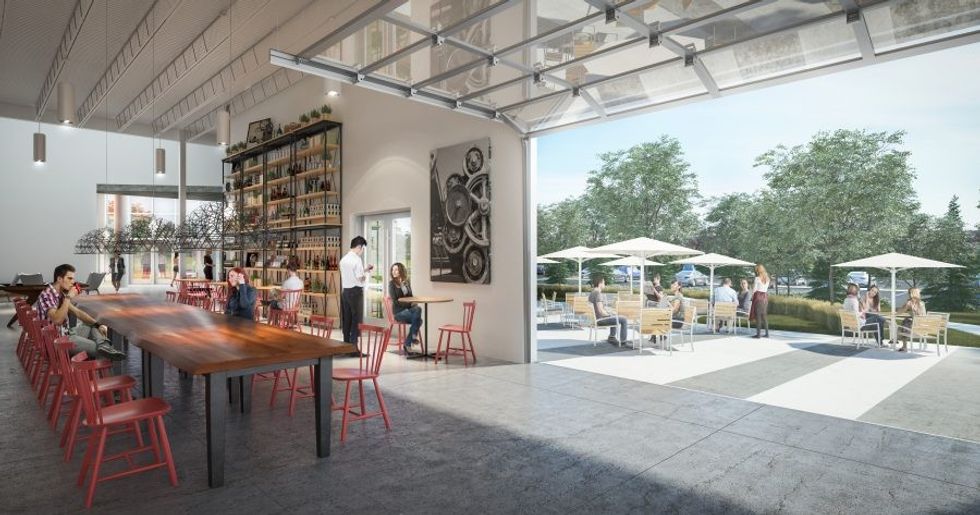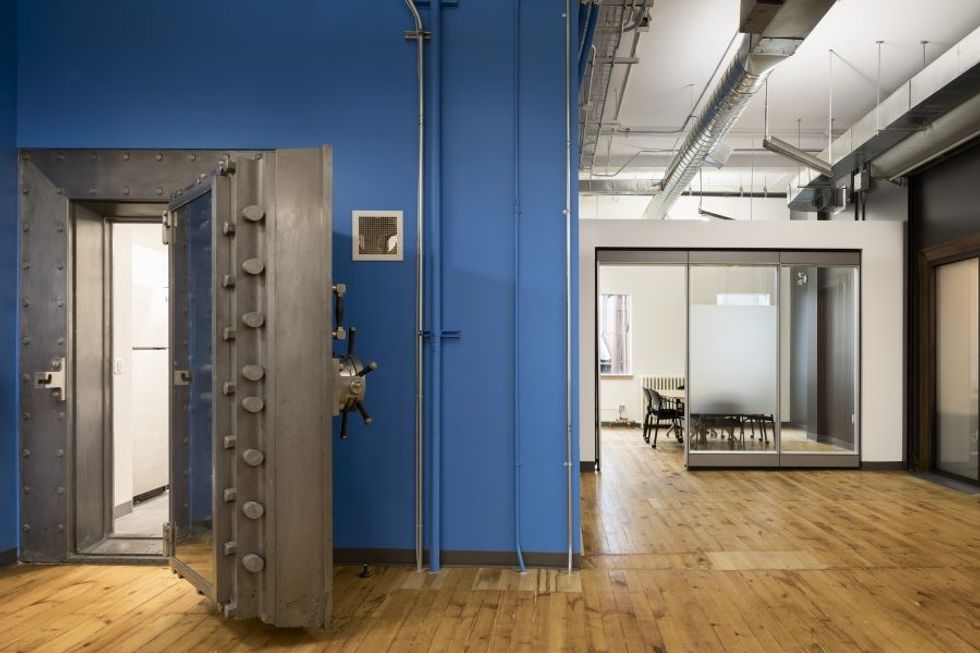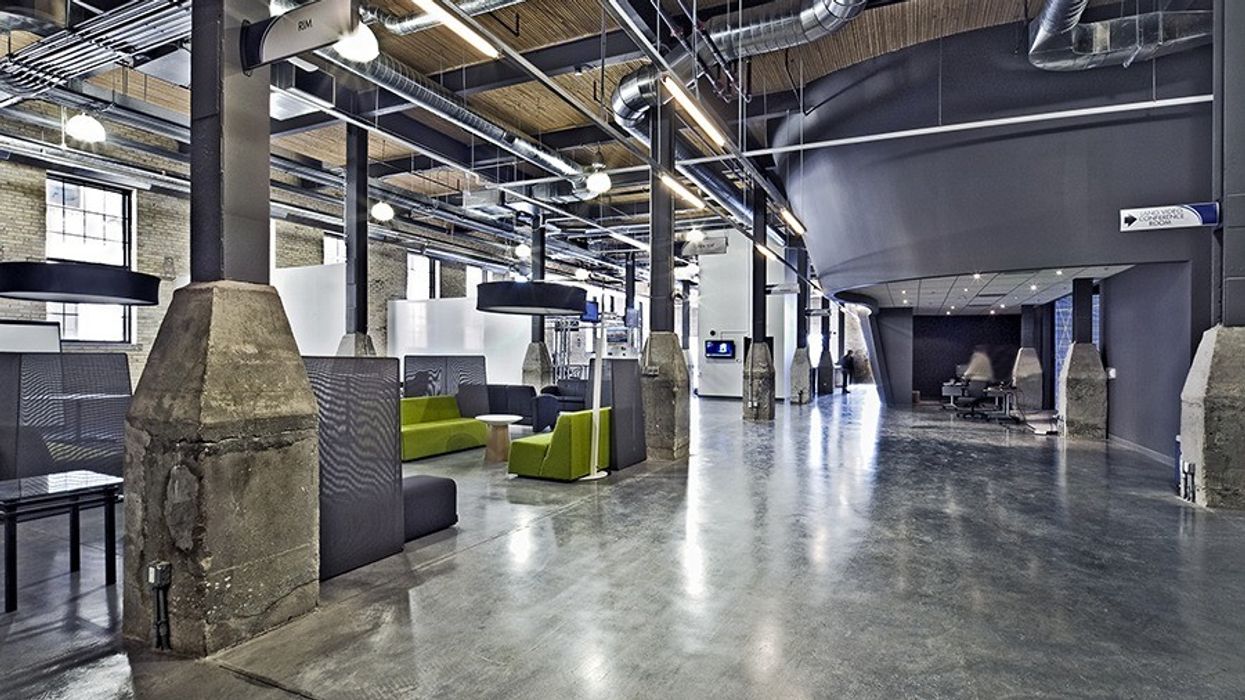
Lines between work and home are blurring. We might be spending more hours at the office, or more hours working from home — or both.
If work spaces are now living spaces, developers, designers, architects and employers have increasingly crucial imperatives — keeping employees healthy and happy. Workplace health initiatives are joining the green building movement of the past decade, side by side on the same path to sustainable futures.
With well-being considered the new “green,” you could say Fitwel might be the new LEED. Developed in the U.S., the certification system envisions a future where every building enhances the health of its occupants and the community at large.
Earlier this year, Menkes Developments announced it would be the first real estate company in Canada to be a Fitwel Champion. Jon Douglas, director of sustainability for the company, says well-being is the new differentiator that Menkes can offer its tenants — a selling point above its competitors. The bottom line is that increased productivity, and lower absenteeism and turnover, saves money.
“An organization has the $3 - $30 - $300 rule,” he says. “Three dollars is typically spent on energy, $30 is typically spent on rent, and $300 is spent on staff. So if you can make a productivity gain or savings on that $300 — even if it’s a small percentage — it outweighs anything you can offer the tenant on the other two. And energy savings is something we’ve already been working on for a very long time.”

Menkes is currently developing four sites for Fitwel certification, with some designations expected to land next year. Announcing its Healthy Spaces program next month — a four-pronged approach of Eating Well, Being Active, Maintaining Health and Engaging Mind — Douglas says building improvements and new programs are aimed at shifting behaviours and attitudes over time.
“For us, it’s making sure our buildings aren’t impeding on someone living a healthy lifestyle,” he says. “So the program we’re developing is creating opportunities for healthy choices. Health is still an individual’s choice, but we want to make sure you have the right information so that you can choose that healthy lifestyle.”
Building and structural priorities include indoor air quality, maximizing natural light, increasing stairwell use and establishing or improving cyclist’s facilities, while programs offer neighbourhood walking maps, healthy food maps, flu shot clinics and a suite of mental health initiatives, including help for stress, sleep and meditation.
“Imagine your employee is energized,” Douglas says. “They sit down at their desk, they’re more productive, they’re active and ready to go.”
High-performing spaces
At RAW Design, all 36 staff work in the same open studio, at the same work stations.
Director Roland Rom Colthoff uses the same desk as a student, he points out: “It’s meant to facilitate communication easily between people, as equals.” In other words, design and philosophy are seamless.
Over the past decade, Colthoff’s firm has gutted and renovated old industrial facilities in the Kitchener and Waterloo area for technology incubators. As generations change over — and a tire factory of the past becomes a digital workshop of the future — there’s an opportunity for cutting-edge companies to bring in fresh minds, and keep them engaged.
“It’s really the opposite of what BlackBerry did, by setting themselves up in the peripheries of suburban locations,” he says of Communitech, the start-up incubator.
“These buildings are specifically in downtown locations because it’s meant to — and this I see as a real ‘office of the future’ kind of thing — it’s meant to fit the lifestyle of the employee, rather than vice versa, where the employee fits the company.”
These digital entrepreneurs, dealing with the stresses of pitching projects and commercializing their ideas, need active, social, collaborative spaces — like building the ultimate percolator.

“With the new corridors we put in, we encourage people to leave their office,” Colthoff says. “There are a couple of cafes and, to get to them, you passed this beautiful courtyard and you went down this corridor that had these little nooks and alcoves in it — which could have little individual events happening — and hopefully you meet a co-worker, or somebody that’s working in an adjacent tenancy, and just strike up a conversation.”
The spaces were fit with natural materials, tall ceilings and exceptional ventilation, Colthoff says, and already benefited from abundant natural light, typical of older buildings. The colours were mostly calming.
“I think the move is more toward a neutral palette, but with a pop at some common areas where people get together,” he says. “You want quiet surroundings when you need to concentrate, you want to be surrounded by natural materials so you feel like you’re in an environment that’s designed for humans — rather than designed with plastic, for robots — and you can come out to a fun area, because you need to escape and you need to expand.”
Then and now
In the mid-19th century, city design was killing people. Crowded urban populations, post-Industrial Revolution, were facing an epidemic of infectious diseases such as cholera, typhoid and tuberculosis.
A combination of design, infrastructure and public health policy stepped in and saved lives: clean drinking water, sewage and ventilation systems, and the demolition of squalid, crowded tenement housing are largely responsible for the leap in life expectancies, all of which we take for granted today.
Our current 21st century epidemic, however — chronic diseases such as diabetes and cardiovascular disease — is one of poor diet and sedentary lifestyles, killing us softly with cars, desk jobs and suburban sprawl.
The parallel between these two centuries and their respective health crises was drawn by a 2014 report from the medical officers of health in the Greater Toronto-Hamilton Area (GTHA). The policy response needed today, its authors proposed? “Healthy, compact, complete communities supporting increased walking, cycling and public transit use.”
Healthier communities
Considering the GTHA is projected to add another 2.2 million residents in the next 15 years, building communities that keep people healthier for longer — with a nationwide aging population — is taking on unprecedented importance.
Peel Public Health analyzed census data and research and concluded that, indeed, workplaces are a priority setting for this issue. Many of us spend 40-plus hours there, and many work at desks.
Lee-Ann Kosziwka’s job, as a workplace health specialist for Peel Public Health, is “dedicated to leading, engaging and mobilizing businesses to create and sustain healthy physical environments.” She sees a sea change in attitudes on the issue.
“We are seeing a shift from focusing on individuals and their lifestyle practices to creating supportive environments through design improvements to the physical environment in and around the workplace,” Kosziwka says.

“We are also noticing that … a healthy workplace environment can be a valuable attraction and retention tool and that employees (are) increasingly demanding flexibility and choice in where they work, and how they work.”
In 2012, the Region of Peel launched a pilot project to create healthy workplace environments in two of its administrative buildings. Over three years, it installed active furniture, enhanced and beautified stairwells, and groomed outdoor spaces for walking paths, bike storage, outdoor fitness equipment and ping pong tables.
Less sitting
As a result, staff spent less time sitting, took the stairs more often, and there was a three-fold increase in walking activities in the outdoor space. It all adds up — one hour of moderate or vigorous activity per week is associated with a 4 per cent to 9 per cent drop in the risk of death from all causes.
With a successful pilot behind them, the region will inform future space planning and corporate modernization priorities, and advocate the use of building standards for Peel businesses.
“We are optimistic about the progress that will be made,” Kosziwka says, “working with non-traditional partners such as designers, architects, the green building industry, HR professionals, property management and real estate sectors, collaborating and partnering to improve occupant health and well- being.”
By the numbers
- Each hour of moderate or vigorous activity per week is associated with a four per cent to nine per cent reduction in the risk of death from all causes.
- Obesity and physical inactivity costs the GTHA $4 billion every year.
- Diabetes-related medical costs attributable to inactivity are more than $550 million each year. Diabetes rates are projected to double in 25 years.
- In 2010, the annual economic burden of unhealthy eating in Canada has been estimated at $6.6 billion.
- If only 10 per cent of Canadians who are currently inactive were to exercise more and reduce their time spent sitting, absenteeism due to diabetes, heart disease and cancer would decrease by more than 23,000 days by 2020. And the GDP would see a boost of $7.5 billion over 25 years.
(Provided by Peel Public Health from a variety of sources)


















